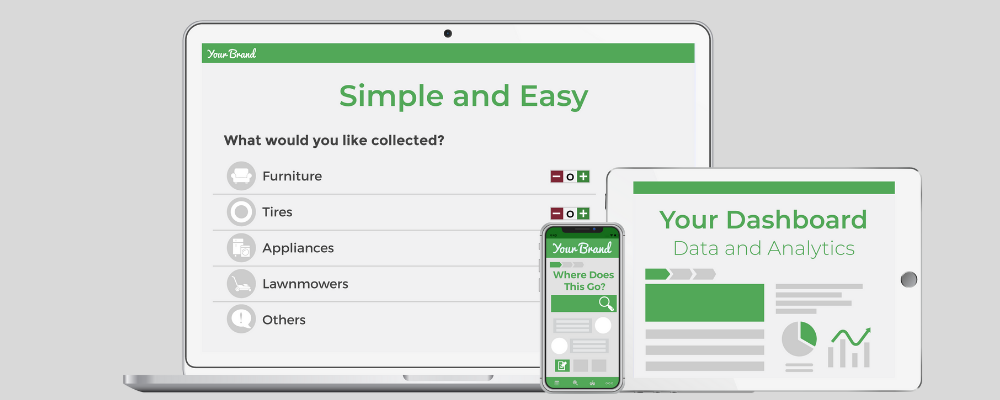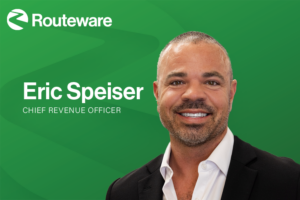[et_pb_section fb_built=”1″ _builder_version=”3.22″][et_pb_row _builder_version=”3.25″ background_size=”initial” background_position=”top_left” background_repeat=”repeat”][et_pb_column type=”4_4″ _builder_version=”3.25″ custom_padding=”|||” custom_padding__hover=”|||”][et_pb_text _builder_version=”4.9.4″ background_size=”initial” background_position=”top_left” background_repeat=”repeat” hover_enabled=”0″ sticky_enabled=”0″]
Today’s waste industry is a dynamic and fast-moving one, and the need to adapt to constant industry changes has never been greater. Evolving recycling markets, increasing overheads, changing regulations and innumerable daily operational challenges are just a few of the ongoing demands facing communities, both large and small.
Solid waste operations everywhere have adopted advancements on several fronts—such as new MRF sorting technologies—one category that is still often overlooked: resident engagement.
The Effect on Your Bottom Line
Why is it that such a crucial aspect of operations—the audience—has largely been ignored when it comes to all of the advancements the industry has made over the last decade? Phone lines and printed calendars are often used by communities to communicate with their residents. Weather delays, route changes, missed collections, holiday schedules, recycling questions, government diversion mandates—tackling these types of collections inquiries on a one-to-one basis via a phone queue is not only inefficient but incredibly costly.
Industry experts estimate that the cost of individual phone calls range from $6 to $8 per call. For an organization intent on balancing its budget, you can see how this number can adversely affect the bottom line.
Digitizing at least some of your resident engagement can reap massive benefits, and, most importantly, elevate the experience of your most precious asset: the tax-paying resident.
Digital Communications
Software-as-a-Service (SaaS) models are beginning to proliferate in the waste industry, meaning access to top-of-the-line technology has never been more affordable. Having a solid waste and recycling app or cloud-based communications platform at your disposal means you can solve age-old customer service and communications dilemmas without your IT staff having to do any of the heavy liftings. Read on for the top reasons to go digital with waste and recycling communications.
#1: Reduce Contamination
Contamination costs money, period. When your audience cannot get quick answers on disposal questions, the resulting guesswork can have costly implications. Recent market changes due to China’s National Sword Ruling have exacerbated this dilemma. Providing a digital platform that delivers recycling education helps to cut contamination where it begins: residents.
#2: Real-Time, All the Time
App-based solutions allow you and your staff to quickly send out important notifications about imminent collection disruptions and schedule changes via push: weather, route delays, holiday schedule shifts, and onward. Digital communications technology allows you to be proactive in your messaging and keep residents informed and well-engaged.
#3: Build Trust with Your Audience
A net benefit of the digital approach is that residents are not guessing about their service. When information is a click away or simply arrives through an alert, the experience is inherently positive. Proactively educating your audience through targeted digital messaging allows you to take control of the conversation. When you deliver answers right when residents need them, they will thank you for it, building trust in your waste and recycling program.
#4: Meet Today’s Expectations
In the age of Google and smartphones, your target audience’s attention span has changed. They expect answers at the speed of a search rather than having to dial in for their queries. Mobile solutions are no longer considered a luxury; they are an expectation in today’s world. SaaS models should allow you to give residents exactly what they want quickly and seamlessly.
#5: Significantly Cut Call Volumes
When residents in your community search for answers that are not accessible, they will pick up the phone to call you for clarification. This is rarely desirable on the resident’s part. This approach, while traditional, will adversely affect your bottom line while taking up a chunk of your time that could have been spent on more productive tasks. Consolidating information into a web portal or mobile app will facilitate an efficient channel of communication with your audience while reducing reliance on call centers. The net result is empowering the individual to self-serve on general inquiries.
#6: Program Promotions
Digital communication platforms inherently open up new avenues to connect with your target audience. Take advantage of the technology to notify users about waste diversion practices, seasonal promotions, new services, and much more.
#7: Save Money
Web portals and mobile apps should save you money, not increase overhead. These technologies are often cost-neutral within the first year of service via operational efficiency gains (phone calls, missed collections, etc.). Further, traditional communication channels like printed calendars and educational materials are costly, time-consuming to create, and increasingly ineffective while having a negative impact on the environment. Digital communication tools address all of these costs and concerns in one fell swoop by removing the need for costly printed collateral and reduced call volumes.
#8: Data-Driven Insights
Perhaps one of the most overlooked elements of a digital communications strategy is the amount of information you can learn about your residents through usage metrics. Most digital products have behind-the-scenes insight into your audience’s digital interactions and help illustrate areas of your program where you may need to apply some TLC. Being data-driven, which should, ultimately, strengthen your resident engagement so you can provide the best service possible with up-to-date analytics.
Digital tools hold great potential to enhance and optimize various aspects of resident communications, and this potential will only increase with time. Digital is a big part of the recipe for success for your waste and recycling program.
[/et_pb_text][/et_pb_column][/et_pb_row][/et_pb_section]





